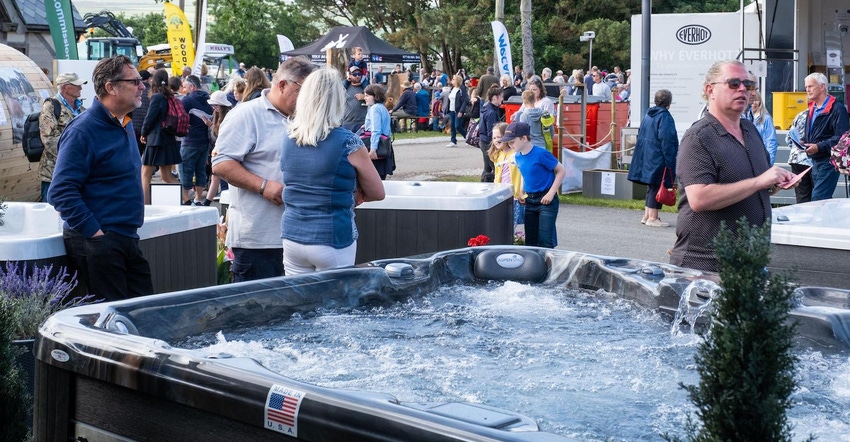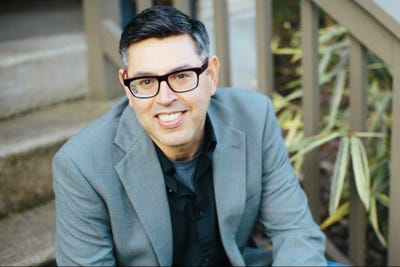Fast-moving changes and ongoing economic uncertainty meant retailers had to strategically manage operations to confront supply shortages, price increases and customer expectations.
October 19, 2022

Like most other parts of the industry, hot tub retailers had a wild and woolly ride in 2022 thanks to ongoing supply chain shortages, price fluctuations and general uncertainty all around.
“Never in my professional career have I had to forecast my hot tub demand a year out,” said Allen Jerabeck, a pool and spa specialist with Tarson Pools and Spas and incoming chair for the Pool & Hot Tub Alliance’s WAVE Young Professionals Network. Jerabeck also was PHTA’s Young Professional of the Year for 2021. “New hot tubs were a year to 19 months out. We were ordering for inventory rather than custom spas.”
Jerabeck said two categories of hot tubs were most popular this year: so-called value hot tubs in the $5,000 to $9,000 range and luxury hot tubs starting around $15,000.
“Folks decided to put money that was going to a vacation into a hot tub,” he said. “We definitely saw a higher number of luxury units being sold and first-time buyers.”
The other category that increased in demand was swim spas, ranging in price from about $25,000 to $60,000. Jerabeck said the pandemic also fueled these sales as seniors especially looked for new ways to do aquatic workouts and wellness at home rather than at the gym or public pool. At the same time, for homeowners with smaller backyards, the units can double as mini pools.
“The biggest request is ‘I need room for my floaty,’” Jerabeck said. “They want to chill on a blowup mattress with their drink, but they also want to be able to work out when they need to.”
Swim spas are also big enough for grandparents to entertain kids and grandkids. “It’s really the family gathering spot,” Jerabeck said.
While it was another good year, with ongoing pandemic/post-pandemic-related demand exceeding supply, Jerabeck said most retailers found themselves having to deal with a series of unusual operational challenges.
Here are three of the biggest Jerabeck faced and how he dealt with them:
Managing customer expectations. Jerabeck said one of the biggest challenges to managing expectations this year was the uncertainty around deliveries.
“If a manufacturer was telling you it was two months, it was probably a good idea to add a few months on top of that,” he said.
The key here was ongoing, consistent communication—especially when the call was hard to make because it meant delays. “It’s always better to make the call than take the call,” he said. “When proactively calling to say there may be a delay, customers are much more likely to respond positively.”
Although delays were difficult, they also led to few cancellations because customers knew they couldn’t get hot tubs anywhere else either.
Dealing with equipment shortages. It wasn’t just the hot tub units that were delayed, it was also equipment, such as hot tub covers. That meant spas sometimes arrived without their covers. To combat this problem, Jerabeck’s team started stocking higher levels of parts in general and even cannibalizing demo units.
“We had to do away with more lean operations,” he said.
In the case of covers, Tarson purchased third-party versions that could be used until the on-brand cover arrived. “That way we could still deliver a spa that was functional,” he said.
Accounting for price increases. It wasn’t just delays that hot tub retailers had to work around. Spas and their accessory prices were also rapidly fluctuating—usually upward. Often these increases were “dressed up” as surcharges for freight and “COVID-related” charges. Jerabeck said these charges typically were 10% to 12%.
Some dealers sold spas with price-increase clauses that allowed them to pass on the costs to customers. But Tarson took another route.
“Once you signed with us, we weren’t going to raise the price on you,” he said.
As he looks to 2023, Jerabeck said he expects “normalcy” to return on the dealer side of the industry.
“It was a great two-and-half-year run, but it’s a common theme that things are starting to slow down,” he said. As with other aspects of the industry, that slowdown is the result of ongoing inflation and economic uncertainty, especially in the face of rising interest rates.
In the face of those realities, Jerabeck said he’ll be focusing on beefing up Tarson’s digital presence and e-commerce options to make it easier for customers to shop from home.
“It’s also the season of education,” he said. “We have this breathing room to get everyone up to speed with the latest trends and current knowledge. So, now’s the time to do it.”
About the Author(s)
You May Also Like




